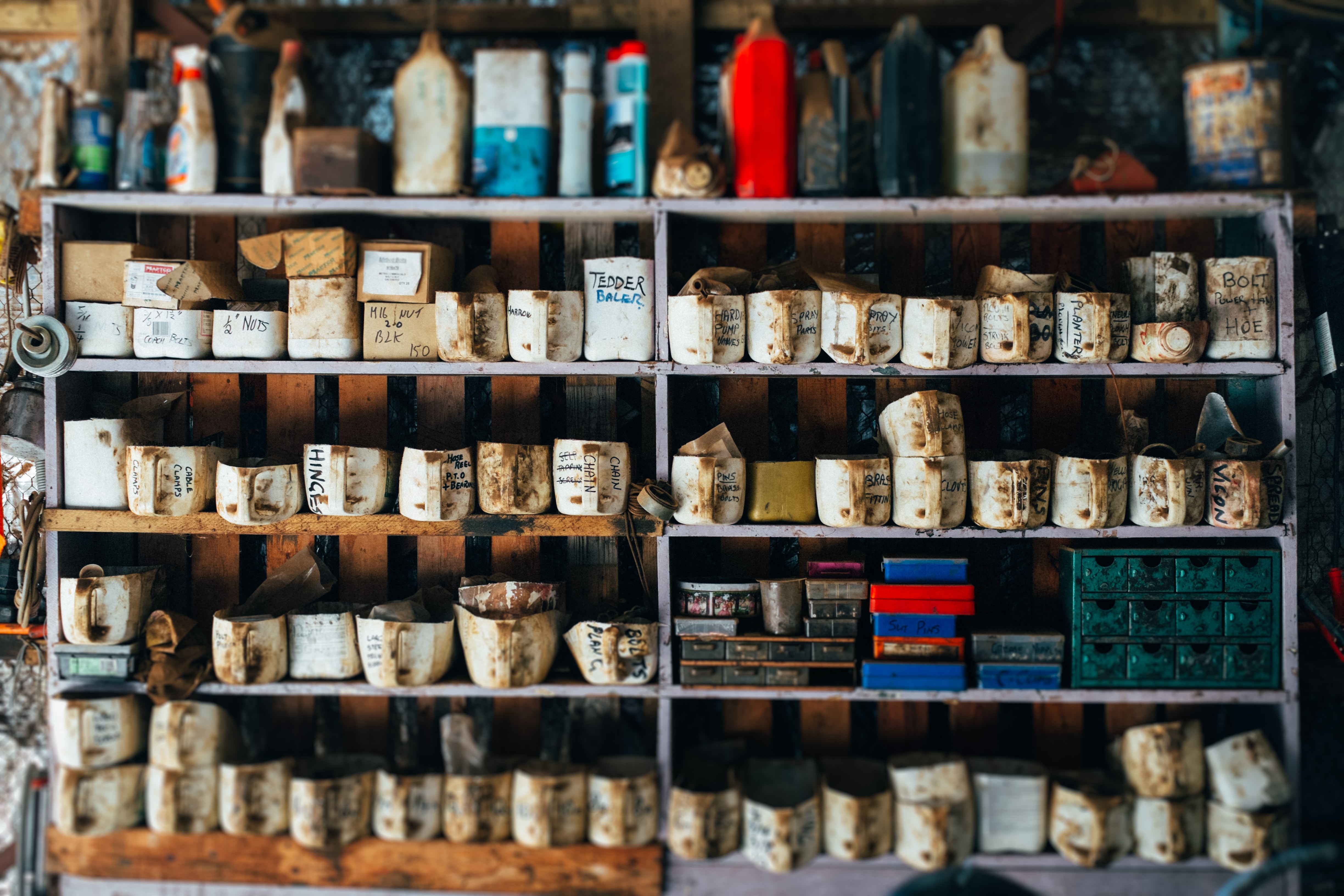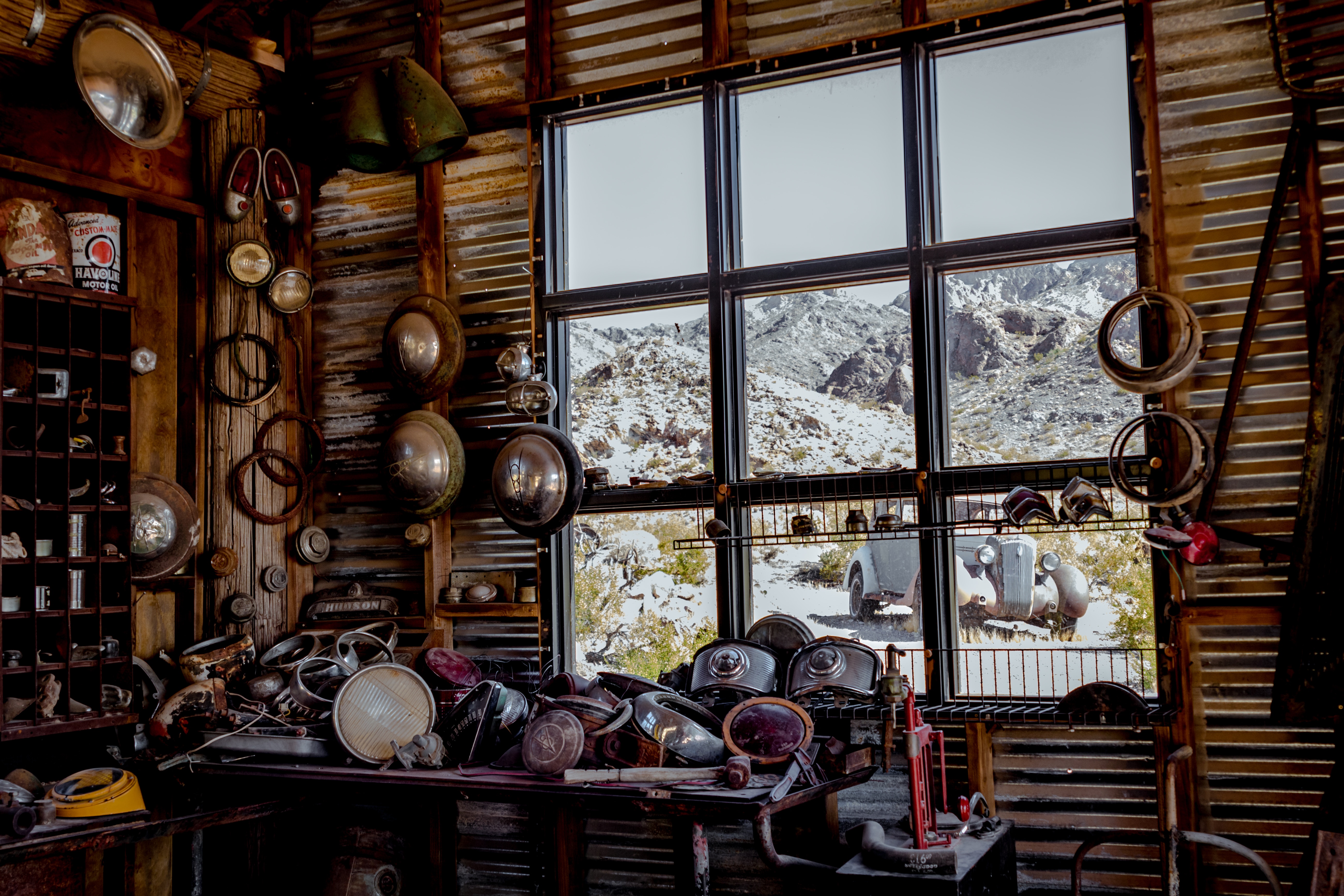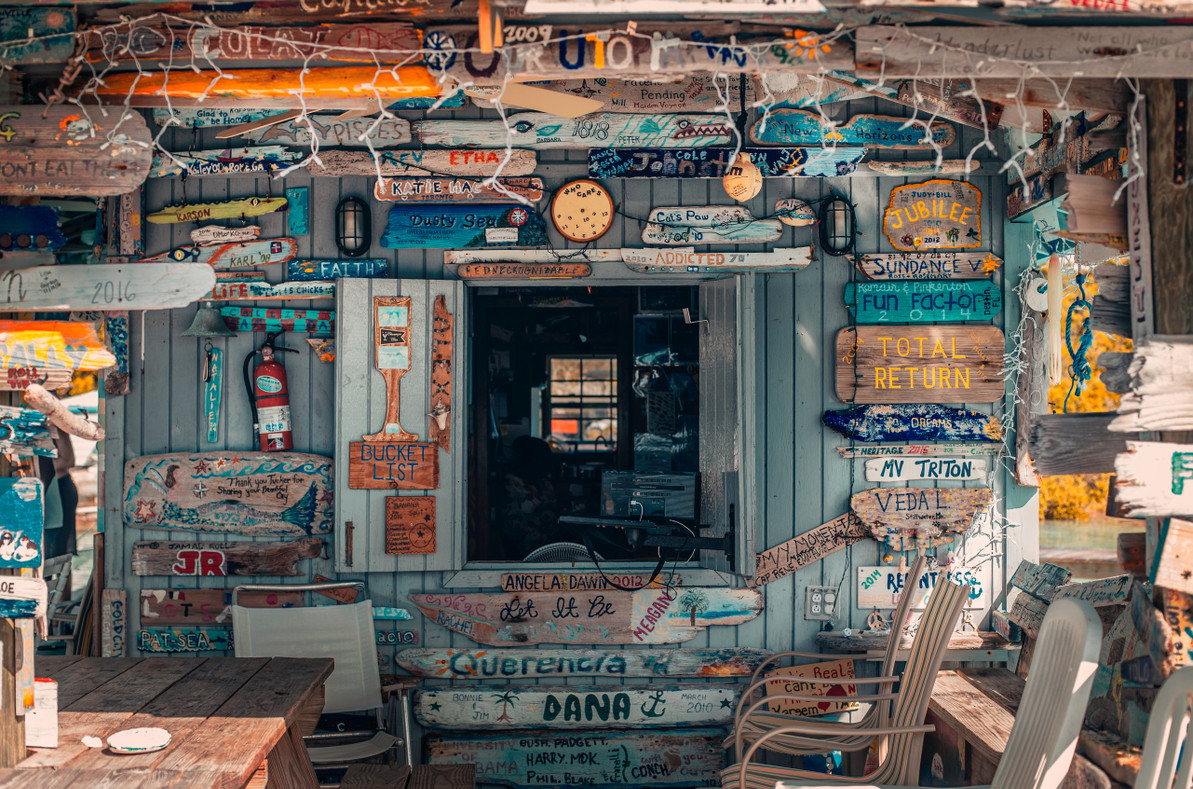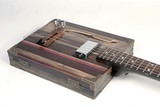Gitty's Guide to Junkin' and Pickin' for Cigar Box Guitar Building - Part 2
In part one of this two-part series, I discussed the sorts of things I look out for when junkin' and pickin', as well as the types of places I go to do it - the "What" and the "Where."
In this part of the article, I focus more on the "How" - the way I go about picking.
They are still under development, but they are working for now.
I have never been a big fan of negotiating prices and dickering, but I have been working on it – so that affects some of these general thoughts.
Everyone is different, and these methods may not work for you, but I hope some people can gain something from it.
Full Price Is OK... Sometimes
It’s OK to pay full retail sometimes.
Some stuff can be old, and still not be high-dollar. I always approach it by thinking of what I can reasonably sell an instrument for.
So if a dealer wants $10 for a very cool tobacco tin, I have to think of what I can reasonably charge for a canjo made from it. $25? $40?
If you are building it for yourself, go wild… but if you are building it to resell, you gotta think about costs.
A coffee tin from the 1920s might be worth $50 to collectors… but a canjo made out of it probably isn’t going to be worth $100 to very many people.
Remember that making instruments out of stuff usually damages or ruins the collectible value of a piece (unless you go to great pains to not do so, but that takes time and time is a cost).
Take A Good Price
If they give you a great price, don’t try to talk them down.
Usually, I try to negotiate a lower price for stuff, especially if I am buying a pretty good-size pile of it.
But sometimes, a seller will throw out an excellent price, and I know I am getting a great deal. In those cases, I don’t even try for a lower price, I just pay the money and know I did well.
Don't Be Shy
Don’t be shy about letting them know what you’re looking for.
You can make up a written list of the stuff you’re interested in if you want, but just telling the owner the sorts of things you want can save you a lot of time.
Sit down and make a list of what your main items of interest are, and then memorize it so you can rattle it off clearly and confidently when asked.
Don’t get too laser-focused in on a limited list though – always keep your eyes open for new stuff that you might not have known about.

Pile Pricing
If prices aren’t marked, form a sample pile and get a price on that.
I have found that in junk stores, and some less fancy antique stores, there might not be any prices on individual items.
This can make it tricky to know whether you want to buy specific items.
In these cases, I have found it useful to do a lap around the place (noting where the good stuff is) and gather up a few different items to present to the owner and get a price on.
This can let you know whether it is worthwhile to gather up any more stuff.
Let them know that you’ll be diving back in for more if the prices are friendly.
If they are firmly set on high prices, you might want to move on.
Be Clear With Your Expectations
Tell them you don’t want anything that’s of high collectible value.
If you’re looking at a shelf full of 20 oil cans, 3 of them might be $50 cans, 8 might be $10 cans, and the rest might be $5 cans.
Unless you are trying to meet a specific customer request, it probably won’t make your creation more saleable or valuable if it has a $50 oil can on it instead of a $5 oil can.
I make sure the seller knows that I am not really interested in anything rare or higher-dollar.
I am not afraid to put stuff back on the shelf.
Bundle Up
Take a page from the Frank Fritz playbook – bundle!
If you don’t know who Frank Fritz is, he’s the short chubby bearded guy on the History Channel show “American Pickers.”
If you’ve never watched American Pickers, start with episode 1 season 1 and watch them all – you’ll learn an awful lot about antiques, buying, negotiating and shenanigans in general.
Bundling is buying groups of items at once, instead of individually, to get a better price on the group.
It seems like it wouldn't work, but somehow it does.
Put one old oil can on the counter, and the price might be a firm eight bucks. But put 5 up there and offer $30 and it might just fly.
That’s $6 each, or 25% off the price on the single.
Sure, you had to buy more stuff and spend more money, but if you wanted all of them anyway, you got a good deal!
If they won’t budge on the price, see if you can add something else. “If I give you the $25 you want on this, will you throw in that?”
It actually works.
Tell 'em What You're Doing
Show and talk about what you are going to make out of the stuff you’re buying.
Bring a couple of your instrument creations along with you on your picking adventures, or at least bring some pictures.
If you have a card, give them a card. Tell them about the stuff you have made.
I am not saying it will get you better prices, but it can make an impression, spark an interest… and it can get you into areas that “normal” customers aren’t allowed to go – the packed basement, that extra semi-trailer off to the side, the unpicked, unsorted, unwashed “good stuff.”
Form Relationships
If you plan on doing this sort of thing for a while, I recommend that you work on getting to know the people in your area who set up booths at flea markets, run junk shops and antique shops, run “free clean-out” businesses, etc.
If you get to know these folks, they might look out for specific items for you, cut you better deals, etc.
If you really get into it, consider making up a watch list to leave with people, so they know to contact you when something good comes along.

Be Open To Trade Deals
If you follow the suggestion above and bring a few finished instruments with you when you go out junkin’, you might run into a seller who offers to trade stuff for one of your creations.
This can be an excellent way to establish a good relationship with a seller, even if you don’t come out too far ahead on that specific trade.
Some might even offer to take something on consignment and try to sell it for you.
Whether or not that’s something you want to do is entirely your call – managing consignment sales is a whole other article or two.
Have Fun
Personally, I love finding more or less rusty old stuff and giving it new life as musical instruments.
Whether it’s a cigar box being re-purposed into a guitar, an old oil can or tobacco tin being made to ring and twang as a canjo, for me this crazy hobby is fun.
For me, getting good deals on neat old stuff to turn into the instruments is almost as fun as making the instruments themselves.
If you find that it stresses you out, then stick with eBay or other less direct means of procuring materials.
Life’s too short to spend time doing stuff that makes you stressed and unhappy.
Don’t Get Too Carried Away
It is a lot easier to accumulate piles of rusty old stuff than it is actually to make instruments out of it.
Don’t strain your finances and personal relationships by the endless accumulation of stuff.
It’s easy to get carried away… as attested by the ever-expanding pile of things in Gitty HQ.
I have to admit I’m not very good at following this particular advice point. – but I do try to keep it in mind.
Conclusion
That about sums up what I’ve learned so far about the fascinating hobby/obsession of junkin’ and picking.
When you venture out into this rusty, dusty and fascinating world of stuff, the whole long history of American (and world) manufacturing lies in front of you.
Sometimes you have to dig for it a bit, but the dig is worth it.
Recommended Reading
- Gitty's Guide to Junkin' and Pickin' for Cigar Box Guitar Building - Part 1
- Practical Tips For Junkers & Pickers Making DIY Musical Instruments
- Why Use Reclaimed Materials To Build Cigar Box Guitars?
- Salvaging Pallet Wood: Beware of These Things!
Recent Posts
-
How to Get Free Stuff with Your C. B. Gitty Order
Shopping for your instrument parts can be just as fun as building the instrument, especially when th …6th Mar 2024 -
Will JEB Dermady's Award Winning Boat Oar Guitar!
C. B. Gitty presents the winner of the 2024 New Orleans Cigar Box Guitar Build-Off, Will Dermady of …22nd Feb 2024 -
Five-String Cigar Box Guitar by Michael Cain of Mercury Lab Guitars
This gorgeous five-string sports a handmade box that was crafted from exotic wood off-cuts. Fr …31st Jan 2024




